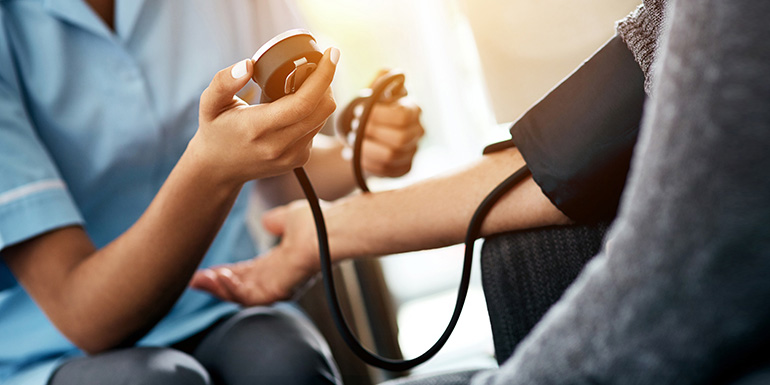February 23, 2021 / By David Valdez, MD, Chief Medical Officer Molina Healthcare of Texas

Heart disease is the most common disease in the U.S. among men and women. One of the key risk factors is high blood pressure, also known as hypertension.
What is blood pressure and hypertension?
Blood pressure is the force of your blood pushing against the walls of your blood vessels. In less than a minute, your blood vessels carry blood from your heart to all the other parts of your body! Blood pressure rises and falls throughout the day, dropping to its lowest when you’re asleep.
Hypertension is when the pressure in your blood vessels is so high that it can damage your organs.
How do doctors diagnose hypertension?
An inflatable cuff is placed around your arm to detect your blood’s pressure as the cuff deflates. This quick, painless procedure can be done at a medical or dental office or pharmacy. There are also ways to measure blood pressure at home.
Doctors diagnose hypertension by checking the top and bottom numbers detected: your systolic and diastolic blood pressure. A healthy range for these two numbers is anything less than 120/80 mm Hg.
What are your systolic and diastolic blood pressures?
Your systolic blood pressure is represented by the top number. It’s the pressure of your blood in your arteries when your heart beats or squeezes.
Your diastolic blood pressure is represented by the bottom number. This is the pressure of your blood when your heart is at rest or in between beats.
Why is it so important to check your blood pressure?
If your systolic blood pressure is too high, it can rupture a blood vessel. A stoke is when this occurs in your brain. High diastolic blood pressure means your organs are under stress, which can cause serious damage over time.
Checking your blood pressure is the only way to know if you have hypertension. This is why it’s called a “silent killer” –- and the reason you need to check your blood pressure every year!
Please protect your health. See your provider for regular physicals and blood pressure checks.
Category: Doctor's Visits / Physical Health